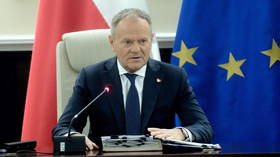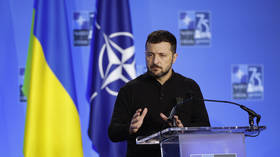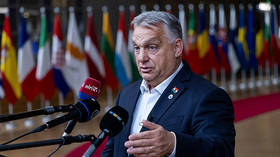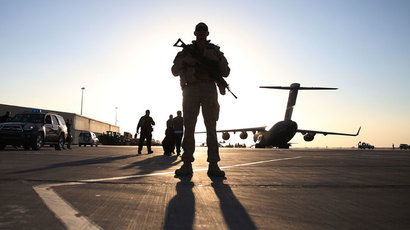7 civilians or 8 militants dead? NATO, Afghans dispute airstrike

NATO and Afghan officials are disputing an airstrike in E. Afghanistan that killed at least seven people. An Afghan official said all the dead were civilians, including a 12-year-old child, but NATO said the “precision” strike only killed militants.
Abdul Wali Sahi, deputy governor of Paktia province, told Reuters that villagers had found seven bodies in the Udkey area of Gardez city and brought them to the provincial capital following the airstrike. Locals say they were gathering firewood on a mountain side when NATO forces fired upon them on Sunday. An eighth person was reportedly wounded.
"They had shovels in their hands, and coalition forces maybe thought they were insurgents," Sahi told the agency. He added that a 12-year-old boy was among the dead.
"From the evidence it seems that all seven who have been killed in the airstrike of the coalition forces are civilians, but this needs to be investigated more to find out why and how this incident has happened," Sahi later told AP.
But Lt. Col. David Olson, a spokesman for the US-led military coalition, disputes the claim. Olson said that a precision airstrike had taken place in the area after NATO forces came under fire.
"The result of this strike was eight enemy killed," he said.

On Monday, protesters brought the seven corpses to the governor's office in eastern Paktia province, claiming they were the ones killed in the airstrike, AP reports.
Protested shouted slogans against ISAF forces and called on the Afghan government to prevent such attacks from being carried out in the area.
Paktia was once one of the most chaotic provinces in the country, though the security situation has improved in recent years.
Bordering the Pakistani-ruled tribal areas of North Waziristan, Bannu and the Kurram Tribal Agency, parts of Paktia are used by militants from the Haqqani network and other Taliban fighters as a safe haven.
Civilian airstrikes from NATO airstrikes remain one of the most divisive issues in the country. The strong enmity generated within Afghanistan influenced former President Hamid Karzai’s decision to refuse to sign a bilateral security agreement (BSA) with the United States to allow a smaller US contingent to stay in the country past 2014.

In September, A NATO airstrike in the eastern Kunar province killed 14 civilians and wounded at least 13 more. Karzai condemned the deaths.
Karzai opposed the BSA in part because it gave US forces immunity from being locally prosecuted. He also believed it would ruin peace overtures with the Taliban, and had wanted Washington to promise its forces would not raid Afghan homes – another source of local resentment.
Karzai’s successor, President Ashraf Ghani, however, inked the security detail the day after being sworn in. The deal was a precursor for a separate NATO status-of-forces agreement, which was signed soon thereafter.
While coalition forces have gone to great lengths to limit civilian casualties in recent years, the number of airstrikes has recently seen a steady uptick with the end of major combat operations nearing.
In August, the number of US airstrikes hit their highest point in two years.
US aircraft dropped 436 bombs and other weapons in August – the highest point since August 2012 – when the US conducted 588 airstrikes, the Army Times reports, citing official figures from US Central Command.
October 7 marked the 13th anniversary of the Afghanistan War – the longest military engagement in US history.
Although major combat operations are set to end this year, the bilateral security agreement signed by Ghani will see a 100-strong military contingent stay in the country through 2015. Under the NATO agreement, around 3,000 troops will remain in the country, primarily from Germany, Turkey and Italy.
















